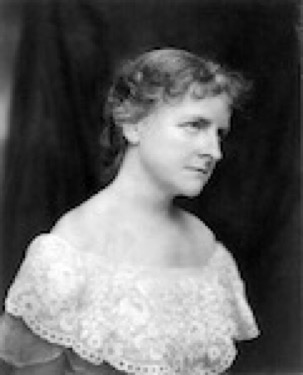Mary Eleanor Wilkins Freeman
Literary Critique - A New England Nun
September/14/2016 09:00 AM Filed: Literary Critiques

Photo Credit: Floride Green
(Wikimedia Commons)
Solitary Contentment and 19th-Century Feminism
Mary Eleanor Wilkins Freeman portrays Louisa, a single woman who has waited fifteen years for her fiancé to acquire his wealth in Australia. Usually, these fortune hunters never return, but Joe does, creating deep turmoil when he walks back into her life.
Published in 1891, “A New England Nun” depicts a lonely woman on the surface, but beneath the isolated facade is an independent lady content to live by herself. Louisa cannot admit that she doesn’t want marriage. The story is an inner struggle as she wars with opposing concepts of family and autonomy. In the 1800s, a woman could not simultaneously maintain her independence and wed, so it is a choice, not a matter of integrating the two.
Freeman makes fun of her standoffish character in subtle ways. Throughout this piece, sarcasm manifests itself in descriptions, allusions, and jabs: “A little yellow canary that had been asleep in his green cage at the south window woke up and fluttered wildly, beating his little yellow wings against the wires. He always did so when Joe Dagget came into the room.”
When Louisa is alone the bird is so bored he sleeps, but the sight of Joe rouses the canary to the point of fluttering excitement. This alludes to dormant sexuality attempting to escape the confines of a sheltered existence in a prim and proper home. The pet is strategically placed in an important scene, and Freeman calls attention to this activity like an aside delivered from a stage.
In the last paragraph, Freeman loses patience with her own protagonist and writes, “She gazed ahead through a long reach of future days strung together like pearls in a rosary, every one like the others, and all smooth and flawless and innocent, and her heart went up in thankfulness. Outside was the fervid summer afternoon; the air was filled with the sounds of the busy harvest of men and birds and bees; there were halloos, metallic clatterings, sweet calls, and long hummings. Louisa sat, prayerfully numbering her days, like an uncloistered nun.”
An afternoon filled with bustling activity is symbolic of the life Louisa has chosen not to pursue. Although Freeman has not overtly condemned this heroine for rejecting marriage, she expresses distaste for Louisa’s decision to do nothing but number her remaining days without a partner.
The idea of blissful matrimony is a fantasy. Louisa’s reality is her seclusion.